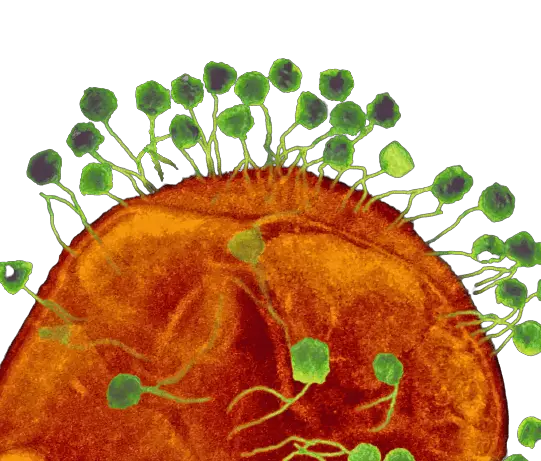Phages, the intriguing viruses that target bacteria, have long held the key to a variety of applications in biotechnology and medicine. In a groundbreaking collaboration, researchers from the University of Exeter (United Kingdom), Massey University, and Nanophage Technologies in New Zealand have achieved a significant milestone by unraveling the enigmatic structure of a widely utilized form of phage. This breakthrough discovery promises to empower scientists with the knowledge needed to design more advanced applications for these viral workhorses.
One of the primary applications of phages lies in a technique called phage display, which plays a vital role in drug discovery. Phage display involves fusing a gene fragment of interest with a specific phage gene responsible for producing one of the phage’s coat proteins. This fusion results in the display of the protein of interest on the surface of the phage, allowing scientists to assess its biological activity and conduct targeted experiments.
While numerous phage variants exist, filamentous phages, named for their long and slender morphology, are frequently employed in phage display and other applications due to their ability to accommodate the display of multiple proteins across their surface. Despite their practical utility, researchers have long grappled with the lack of comprehensive knowledge regarding the structure of filamentous phages.
In a groundbreaking publication in the esteemed journal Nature Communications, Dr. Vicki Gold of the University of Exeter presents the first-ever elucidation of the structure of a filamentous phage.
“Phages constitute a captivating and rapidly expanding field of research, offering a range of current and potential applications. Until now, however, we have lacked a complete understanding of what filamentous phages truly look like. With our recent breakthrough, we have provided the initial glimpse into this mysterious world, paving the way for enhanced phage applications in the future.”
Dr. Vicki
One of the main challenges in capturing the structure of filamentous phages lies in their considerable length, which has hindered previous attempts to obtain full images. To overcome this hurdle, researchers ingeniously created miniaturized versions of the phages that were approximately ten times shorter, resembling straight nanorods rather than the entangled spaghetti-like filaments of their larger counterparts. This downscaled model allowed for comprehensive imaging using cutting-edge cryo-electron microscopy techniques, enabling researchers to visualize the phage’s structure in its entirety.
The newfound knowledge of filamentous phage structure opens up a multitude of possibilities for scientists in the field of biotechnology. By understanding the fundamental architecture and characteristics of these viruses, researchers can now optimize their applications in drug discovery, diagnostic tools, and targeted therapies. The ability to engineer specific coat proteins on the surface of filamentous phages holds immense potential for developing novel treatments and interventions, tailored to combat specific diseases or deliver therapeutic agents with exceptional precision.
Furthermore, this breakthrough offers insights into the vast diversity of phages that inhabit our world. With billions of phage types yet to be fully explored, scientists can now leverage this newfound structural understanding to delve deeper into the extraordinary world of phages. Unlocking the secrets of these viral entities may unveil groundbreaking solutions for challenges in various fields, from biotechnology and medicine to environmental and agricultural applications.
As the realms of biotechnology and medicine continue to evolve, phages stand as captivating agents of change. With each breakthrough, scientists move closer to harnessing the immense potential of these viral superheroes. The groundbreaking research conducted by Dr. Vicki Gold and her collaborators ushers in a new era of phage-based biotechnology, with far-reaching implications for human health and our understanding of the microbial world. As the mysteries of phages unfold, the future holds great promise for their transformative role in shaping the world of biotechnology.
Featured photo adapted from the original research paper





Amazingly awesome. Such a great breakthrough is life changing
This is good news Raph, is by any means this done to all phages